|
puccini’s tosca/
OPERA/
MUSIC MAIN |
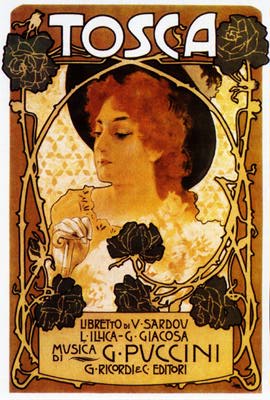
|
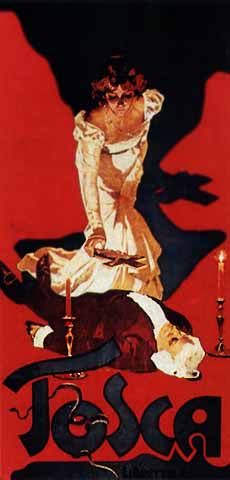 |
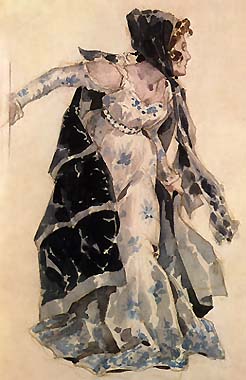
|
|
|
THE SETTING OF TOSCA IN ROME
opens up so many gastronomic possibilities! No Italian opera
singer would discount the importance of food.
In the case of Tosca, it’s fun to speculate about what the
characters were actually eating.
The Lunch Basket
Tosca’s lover, Cavaradossi, had a basket lunch brought to him by
the church sacristan. Probably this lunch was not very different
from what is eaten in Rome today. It would have had a loaf of
bread – probably white, as Cavaradossi was a nobleman (peasants
ate dark bread, the well-to-do ate white); a local sheep cheese,
like the Cacio di Roma or Sini Fulvi Pastore that we can find
today. No doubt there would have been a farm-cured salami
and a jug of wine – possibly a white from Orvieto. |
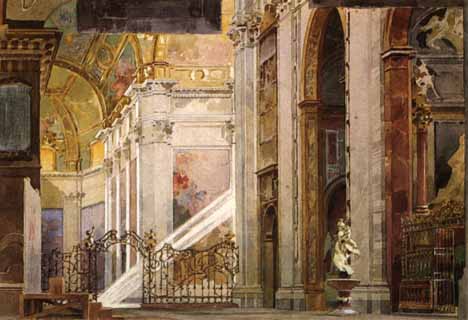
|
Act 1 -The Church of Sant’Andrea
della Valle
|
Scarpia’s Dinner
Now to what Scarpia was eating on that fateful night. As the
police chief of Rome, he would have eaten in the style of Roman
nobility. Since it was evening, his dinner was a lighter version
of the main meal of the day eaten at mid-afternoon.
As today, food was status for people like Scarpia. His dinner
earlier in the day would probably have begun with a tray of
artfully arranged small appetizers like prosciutto wrapped in
colourful marzipan, savoury tartlets of nuts and greens, and small
fritters of sweetbreads or, perhaps, oysters. A soup would
follow this course – possibly a capon broth with tiny ravioli
floating in it, their filling consisting of breast of capon,
cheese, cinnamon, nutmeg, marrow, and herbs. Then there would be
either a roasted whole fish stuffed with truffles or, perhaps,
hare cooked in a pungent sweet/sour sauce of black pepper,
sugar, vinegar, nuts, fruits, and red wine. Once this dish was
removed, the servants would present a large silver platter with
a whole baby lamb roasted and turned on a spit over an open fire
until glazed to a mahogany brown. The tender meat would have
been laced with strips of prosciutto and basted with wine and
herbs. For dessert, Scarpia probably had trays of tiny cookies
and fanciful marzipan and, perhaps, an elaborate moulded frozen
dessert layering cake and iced cream. When Tosca enters I’ve
always imagined that Scarpia was just finishing the dessert.
That Spanish wine referred to might have been a sweet one –
possibly a dark golden and rich Oloroso Sherry. |
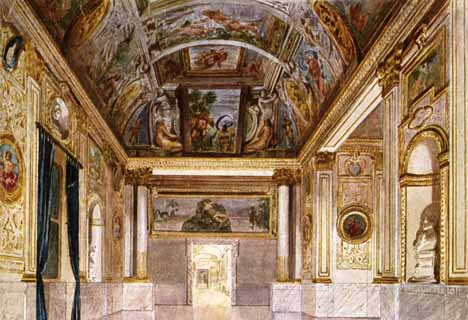
|
Act 2 -Scarpia’s room at the Palazzo
Farnese
|
Modern Menu and
Suggested Wines
For a modern menu from Rome to celebrate Tosca, try the classic
Roman Salad Puntarelle followed by a rustic Roman pasta dish,
Spaghetti a Cacio e Pepe (spaghetti with sheep cheese and black
pepper). If you like, a butterflied leg of lamb flavoured with
garlic, olive oil, and fresh rosemary cooked on the grill or
under the broiler could follow the pasta. Dessert should be a
fresh fruit tart and a Marsala for sipping. For the wines, this
is a red wine meal if there ever was one, but to begin with pour
an aperitif of iced Frascati, the tart simple white loved by
Romans. With the pasta, drink a Fiorano Rosso, Velletri Rosso,
or Bombino Nero.
Lynne Rossetto Kasper
|
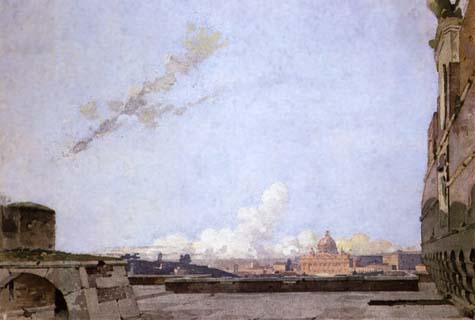
|
Act 3 – The platform of the Castel
S. Angelo
|
|
home
|